
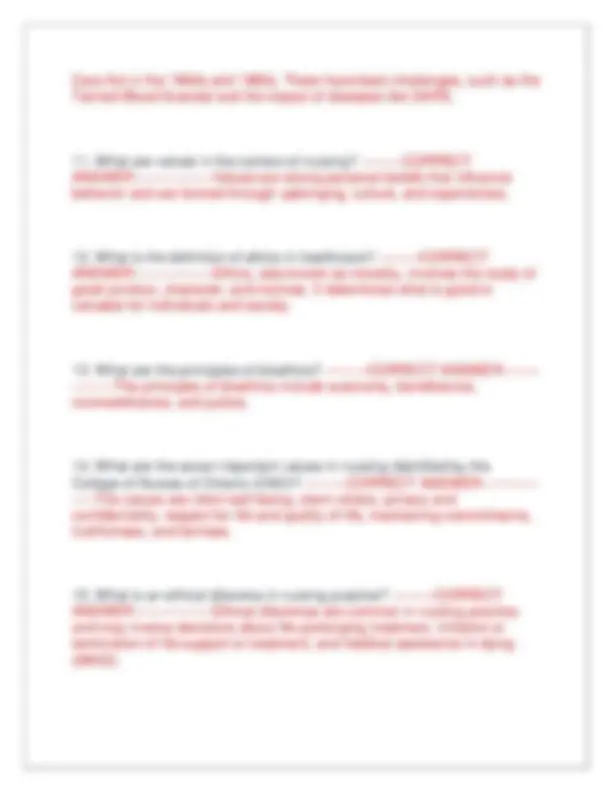
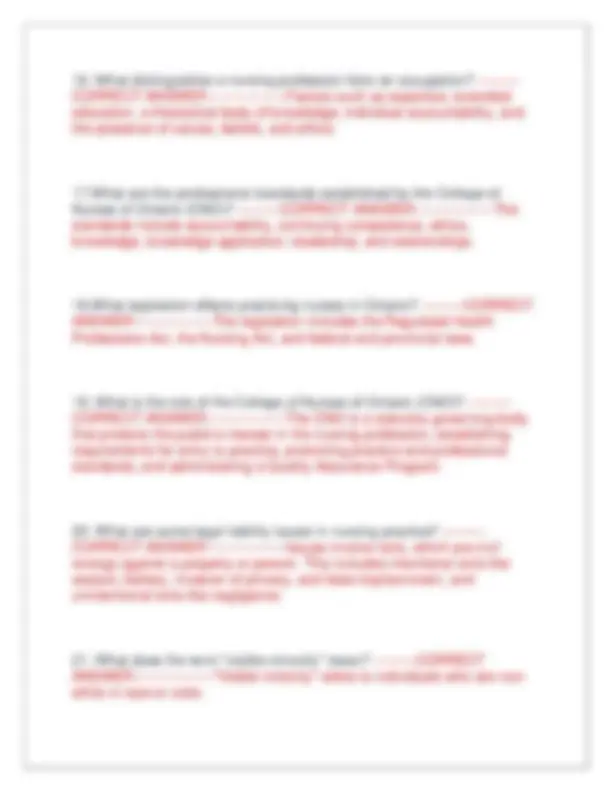
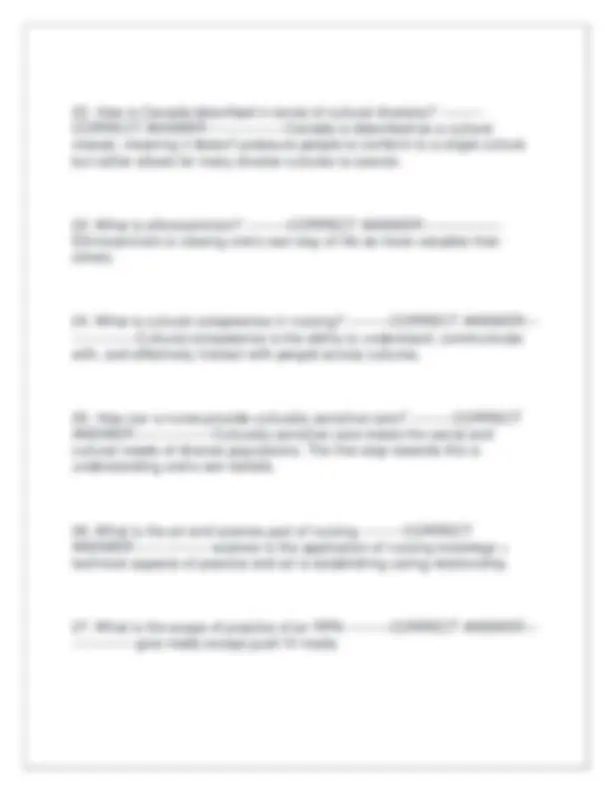
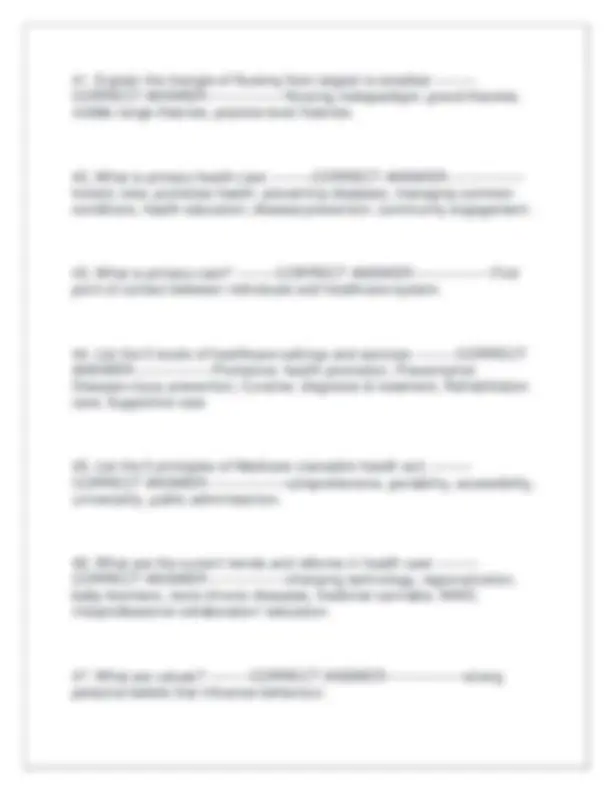
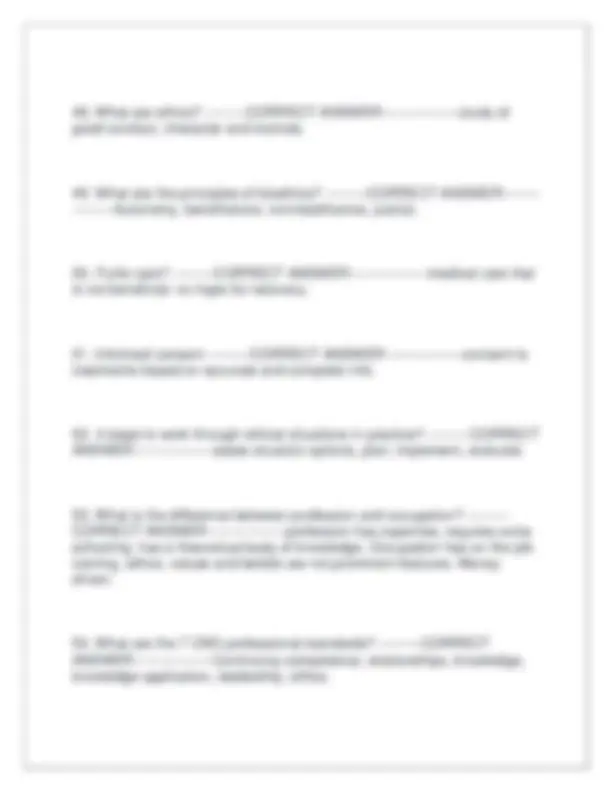
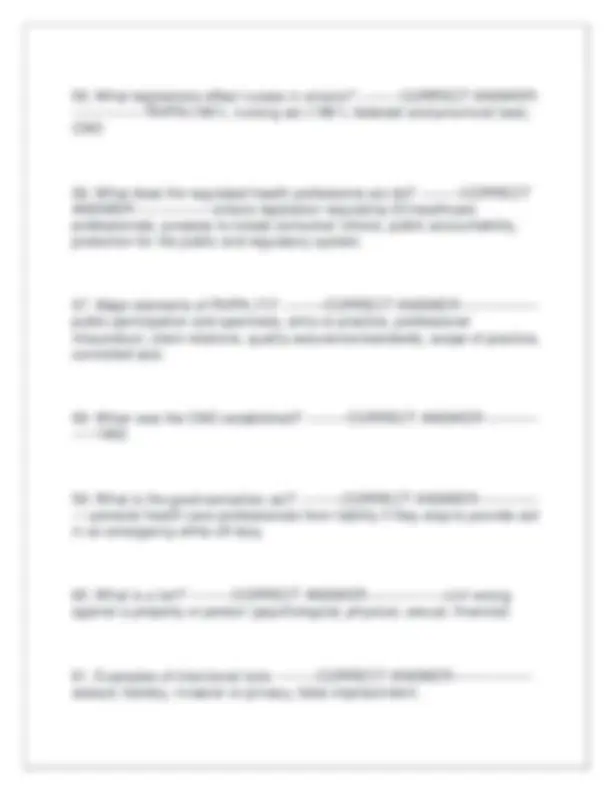
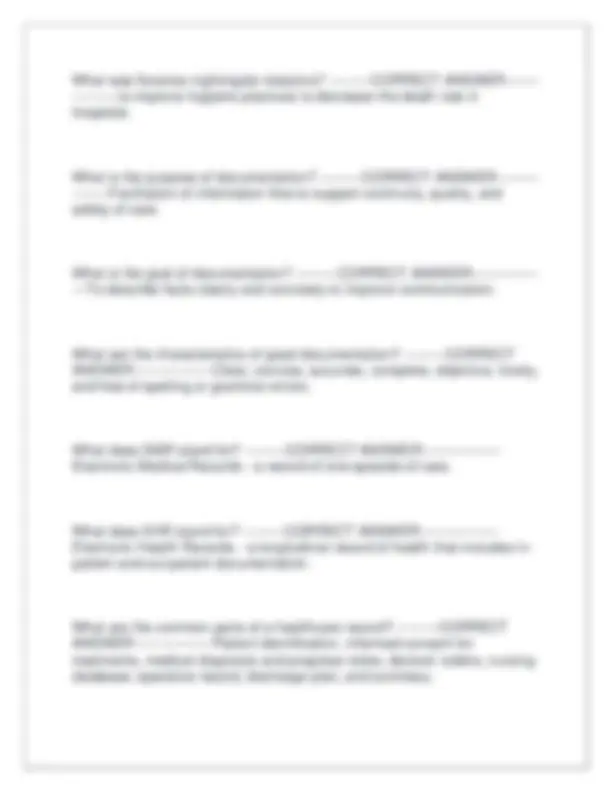
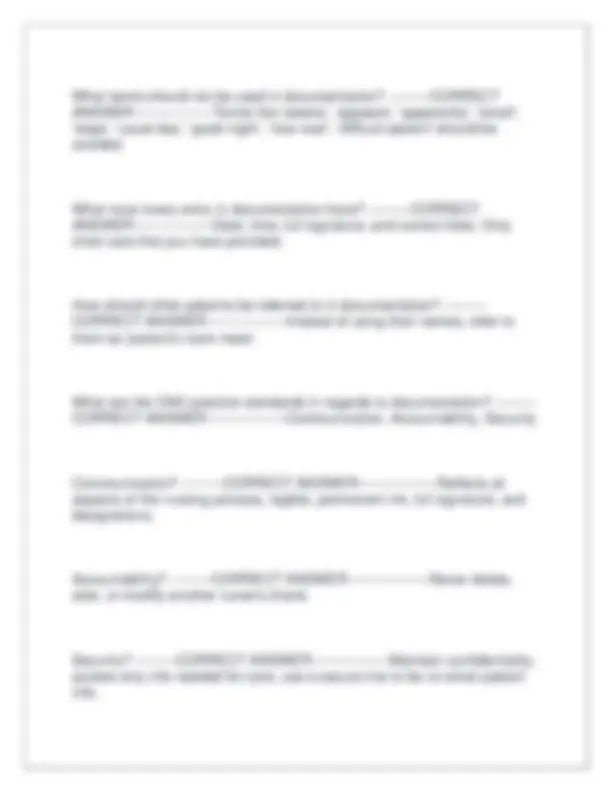
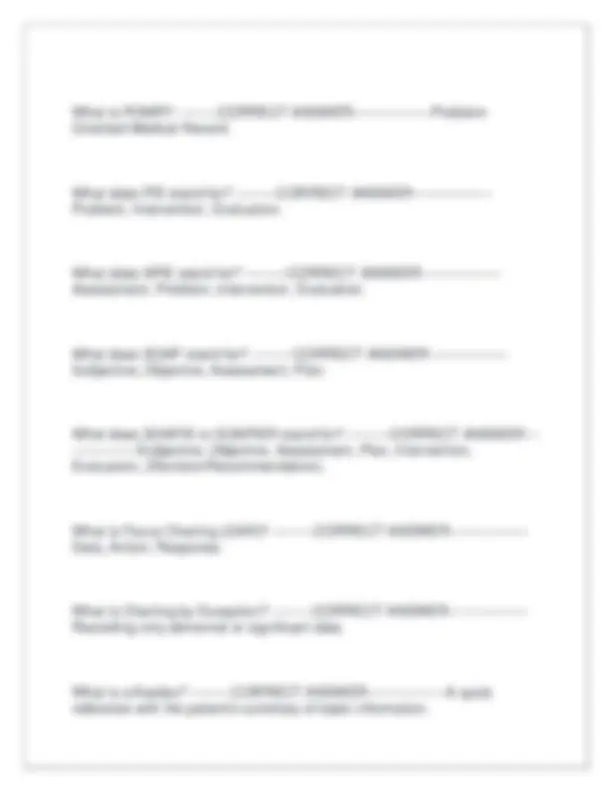
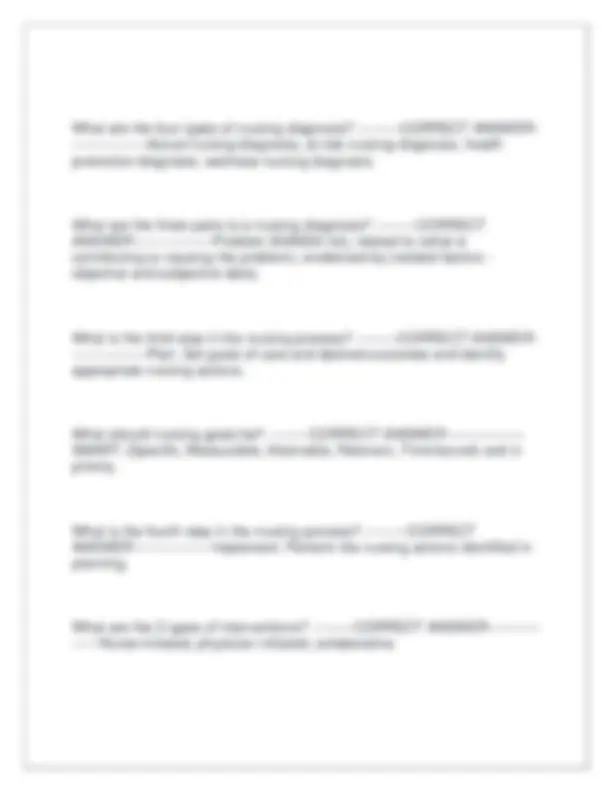
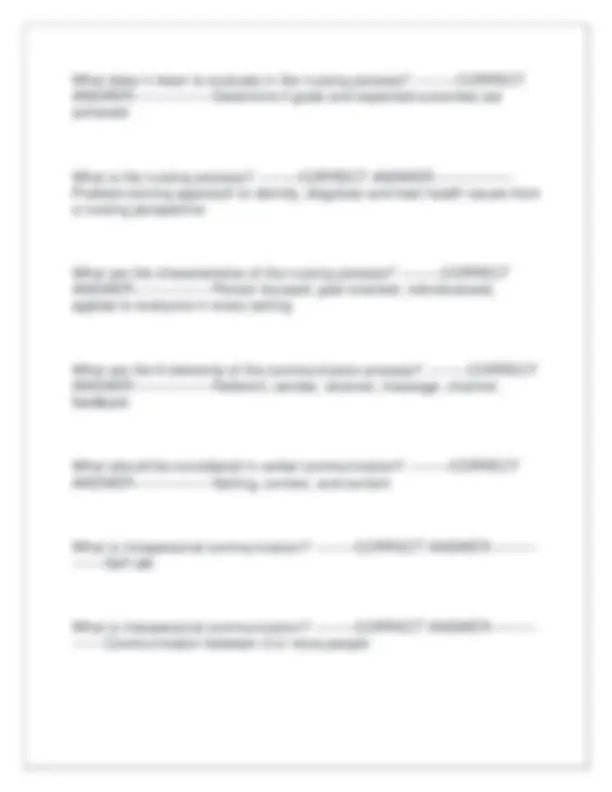
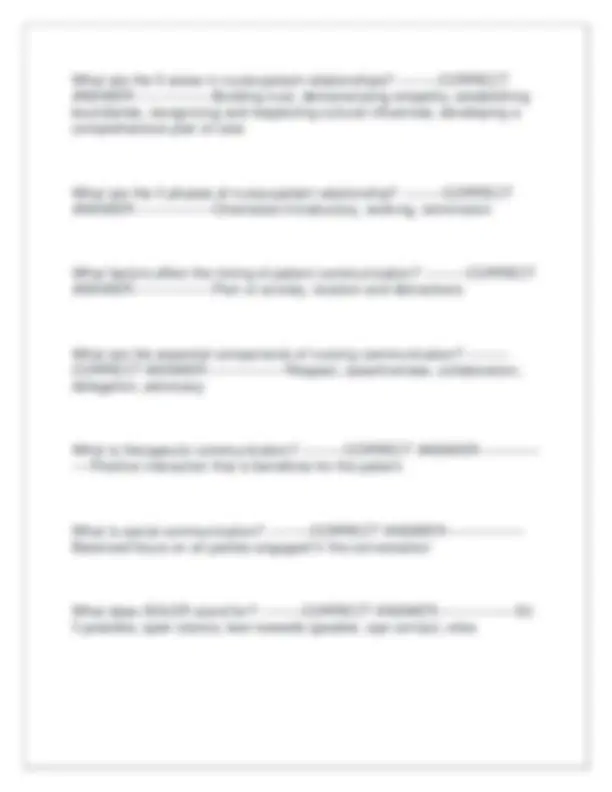
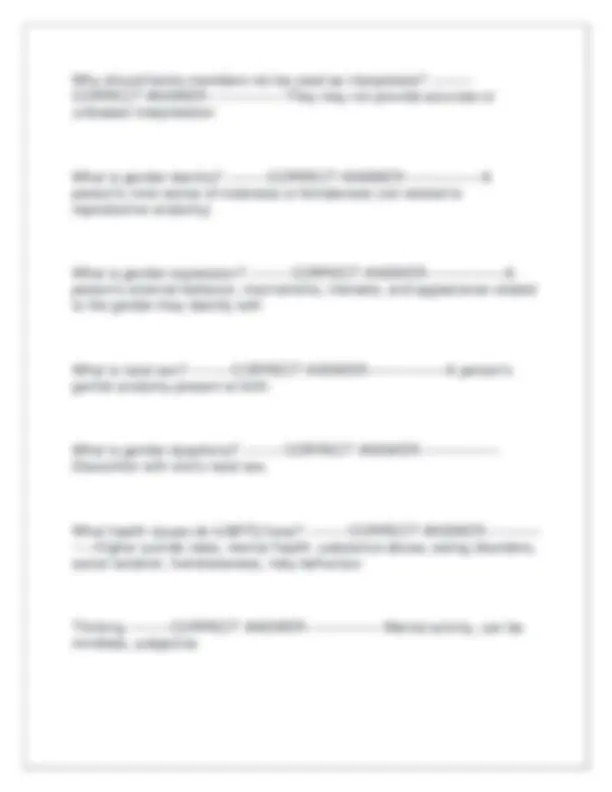
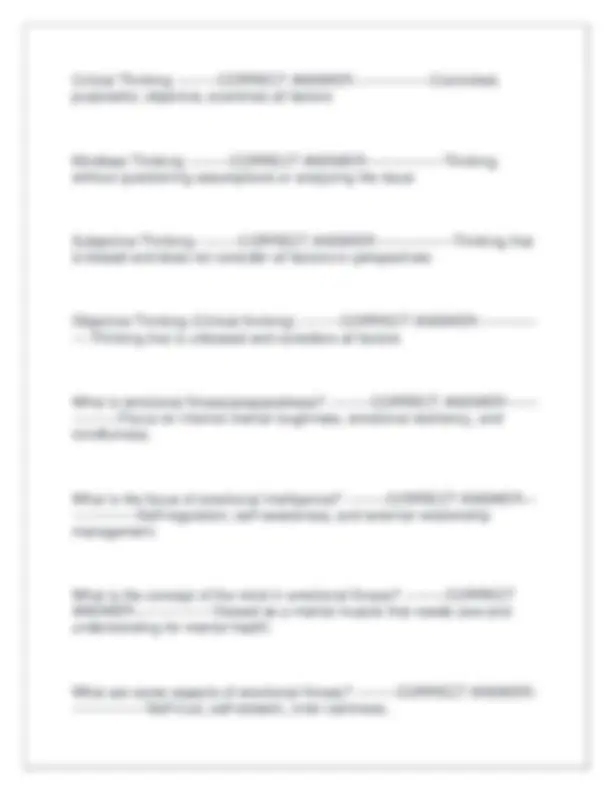

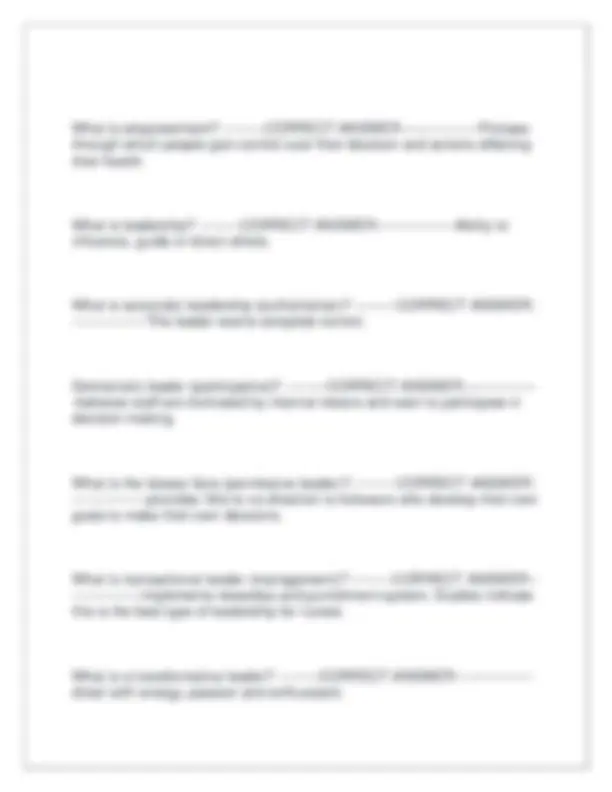
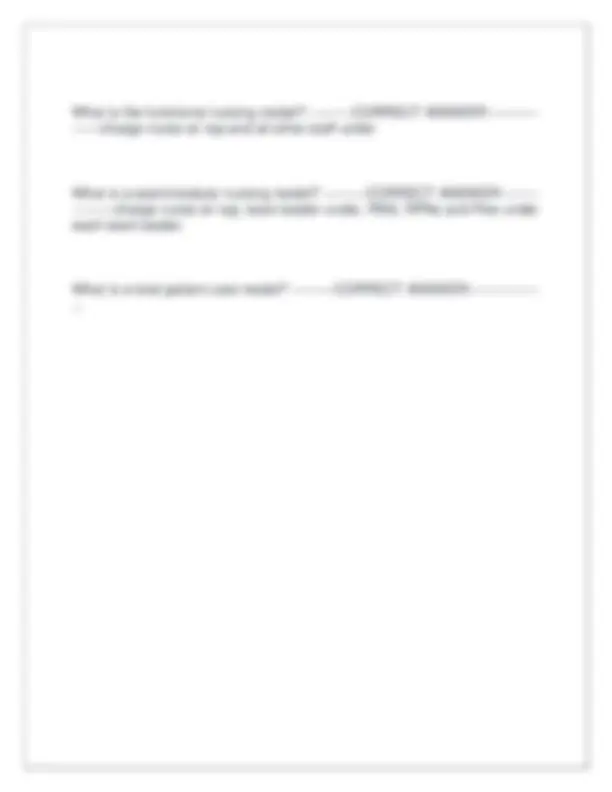


Study with the several resources on Docsity

Earn points by helping other students or get them with a premium plan


Prepare for your exams
Study with the several resources on Docsity

Earn points to download
Earn points by helping other students or get them with a premium plan
Community
Ask the community for help and clear up your study doubts
Discover the best universities in your country according to Docsity users
Free resources
Download our free guides on studying techniques, anxiety management strategies, and thesis advice from Docsity tutors
A comprehensive overview of canadian nursing history, highlighting key milestones, influential figures, and the evolution of nursing education and practice. It delves into ethical considerations in nursing, exploring values, principles, and common dilemmas. The document also examines the scope of practice for registered practical nurses (rpns) and the role of the college of nurses of ontario (cno). It concludes with an introduction to nursing theories and research methodologies, emphasizing the importance of theoretical frameworks in guiding nursing practice.
Typology: Exams
1 / 25

This page cannot be seen from the preview
Don't miss anything!


















When did the history of nursing begin in Canada? ---------CORRECT ANSWER-----------------Nursing history in Canada dates back to the 1600s, with indigenous healing traditions and midwives playing important caregiver roles in their communities.
Who is credited as the first person to provide nursing care in Canada? --- ------CORRECT ANSWER-----------------Marie Rollet Hébert is credited as the first person to provide nursing care in what is now Canada in 1617.
What was the first hospital in Canada, and who established it? --------- CORRECT ANSWER-----------------Jeanne Mance established the first Canadian hospital in Montreal in 1642.
Who were the Grey Nuns, and what was their role in Canadian nursing history? ---------CORRECT ANSWER-----------------The Grey Nuns were the first community nursing order in Canada, visiting both settlers and Indigenous Peoples.
What changes occurred in nursing and healthcare in the 1700s? --------- CORRECT ANSWER-----------------The 1700s saw the establishment of nursing orders, hospitals, and the provision of healthcare to different populations.
generalised hypothesiss and ends w a conclusion (structured data, statistical analysis, objective conclusions, survey, experiments)
What was florence nightingale missions? ---------CORRECT ANSWER------- ----------to improve hygiene practixes to decrease the death rate in hospitals. What is the purpose of documentation? ---------CORRECT ANSWER--------- --------Facilitation of information flow to support continuity, quality, and safety of care. What is the goal of documentation? ---------CORRECT ANSWER-------------- ---To describe facts clearly and concisely to improve communication. What are the characteristics of good documentation? ---------CORRECT ANSWER-----------------Clear, concise, accurate, complete, objective, timely, and free of spelling or grammar errors. What does EMR stand for? ---------CORRECT ANSWER----------------- Electronic Medical Records - a record of one episode of care. What does EHR stand for? ---------CORRECT ANSWER----------------- Electronic Health Records - a longitudinal record of health that includes in- patient and out-patient documentation. What are the common parts of a healthcare record? ---------CORRECT ANSWER-----------------Patient identification, informed consent for treatments, medical diagnosis and progress notes, doctors' orders, nursing database, operative record, discharge plan, and summary.
What terms should not be used in documentation? ---------CORRECT ANSWER-----------------Terms like 'seems', 'appears', 'apparently', 'small', 'large', 'usual day', 'good night', 'nice man', 'difficult patient' should be avoided. What must every entry in documentation have? ---------CORRECT ANSWER-----------------Date, time, full signature, and correct titles. Only chart care that you have provided. How should other patients be referred to in documentation? --------- CORRECT ANSWER-----------------Instead of using their names, refer to them as 'patient's room mate'. What are the CNO practice standards in regards to documentation? --------- CORRECT ANSWER-----------------Communication, Accountability, Security Communication? ---------CORRECT ANSWER-----------------Reflects all aspects of the nursing process, legible, permanent ink, full signature, and designations. Accountability? ---------CORRECT ANSWER-----------------:Never delete, alter, or modify another nurse's charts. Security? ---------CORRECT ANSWER-----------------Maintain confidentiality, access only info needed for care, use a secure line to fax or email patient info.
What are Critical Pathways or Care Maps? ---------CORRECT ANSWER---- -------------Pre-printed documents with specific goals, interventions, and time frames. (e.g., pneumonia patient expected to have a 4 day stay) What are standardized nursing care plans? ---------CORRECT ANSWER---- -------------Pre-printed established care plans that should be modified based on the individual's needs. What is handoff in healthcare? ---------CORRECT ANSWER----------------- Passing patient-specific information from one caregiver to another for continuity of care. What should be addressed in a handoff? ---------CORRECT ANSWER------- ----------Care, treatment, services rendered, current condition, anticipated changes. What does SBAR stand for? ---------CORRECT ANSWER----------------- Situation, Background, Assessment, Recommendations. What does 'Situation' refer to in SBAR? ---------CORRECT ANSWER--------- --------What is happening with the patient. What does 'Background' refer to in SBAR? ---------CORRECT ANSWER----- ------------What led to the current situation.
What does 'Assessment' refer to in SBAR? ---------CORRECT ANSWER---- -------------The nurse's understanding of the problem. What does 'Recommendation' refer to in SBAR? ---------CORRECT ANSWER-----------------What actions should be taken. What should be done when taking a verbal order? ---------CORRECT ANSWER-----------------Repeat the order verbatim, enter order, document it is a verbal/phone order, include date, time, physician's name, and nurse's signature. What is ADPIE in the nursing process? ---------CORRECT ANSWER--------- --------Assess, Diagnose, Plan, Implement, Evaluate. What is the first step in the nursing process? ---------CORRECT ANSWER-- ---------------Assess: gather information about the patient's condition, current and past health status, and functional status. What are the sources of data in nursing assessment? ---------CORRECT ANSWER-----------------Primary (patient), secondary (family and significant others), nursing notes and change of shift report, lab and diagnostic results, tertiary sources (nurse's experience/intuition). What is the second step in the nursing process? ---------CORRECT ANSWER-----------------Diagnose: Identify the patient's problem within the domain of nursing.
What does it mean to evaluate in the nursing process? ---------CORRECT ANSWER-----------------Determine if goals and expected outcomes are achieved What is the nursing process? ---------CORRECT ANSWER----------------- Problem-solving approach to identify, diagnose and treat health issues from a nursing perspective What are the characteristics of the nursing process? ---------CORRECT ANSWER-----------------Person focused, goal oriented, individualized, applies to everyone in every setting What are the 6 elements of the communication process? ---------CORRECT ANSWER-----------------Referent, sender, receiver, message, channel, feedback What should be considered in verbal communication? ---------CORRECT ANSWER-----------------Setting, context, and content What is intrapersonal communication? ---------CORRECT ANSWER---------- -------Self talk What is interpersonal communication? ---------CORRECT ANSWER---------- -------Communication between 2 or more people
What are the 5 areas in nurse-patient relationships? ---------CORRECT ANSWER-----------------Building trust, demonstrating empathy, establishing boundaries, recognizing and respecting cultural influences, developing a comprehensive plan of care What are the 3 phases of nurse-patient relationship? ---------CORRECT ANSWER-----------------Orientation/introductory, working, termination What factors affect the timing of patient communication? ---------CORRECT ANSWER-----------------Pain or anxiety, location and distractions What are the essential components of nursing communication? --------- CORRECT ANSWER-----------------Respect, assertiveness, collaboration, delegation, advocacy What is therapeutic communication? ---------CORRECT ANSWER------------- ----Positive interaction that is beneficial for the patient What is social communication? ---------CORRECT ANSWER----------------- Balanced focus on all parties engaged in the conversation What does SOLER stand for? ---------CORRECT ANSWER-----------------Sit if possible, open stance, lean towards speaker, eye contact, relax